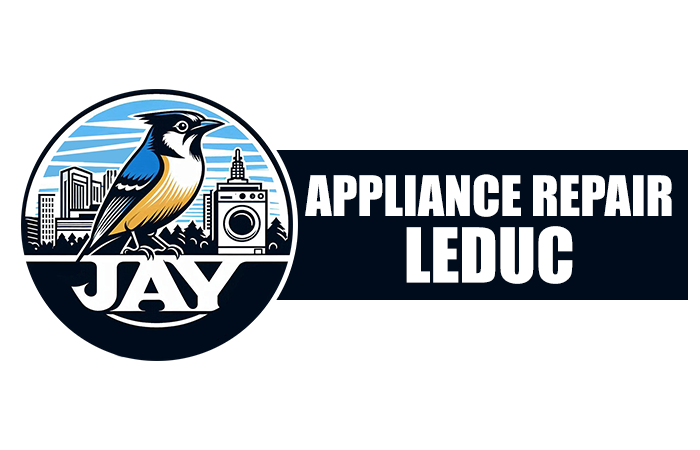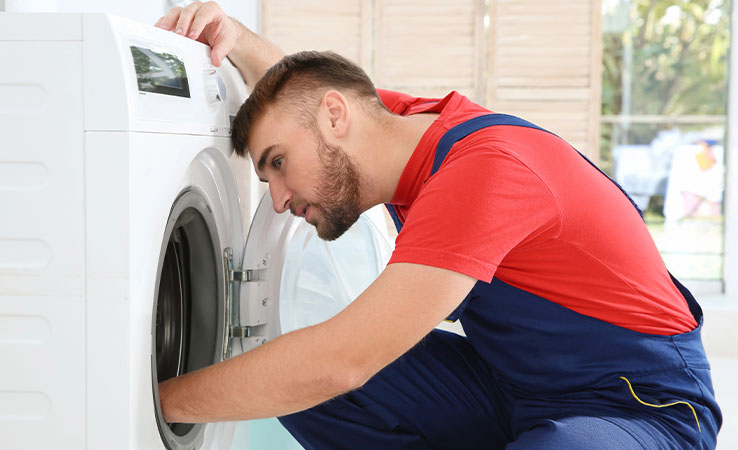Understanding the Role of the Water Inlet Valve
Every washing machine depends on the water inlet valve to control how water flows into the tub. This small but vital part opens and closes when the cycle starts, letting in the right mix of hot and cold water. If the valve does not work, the washer either fills too slowly or not at all. As a result, the wash cycle cannot move forward. Our team at JAY Appliances often sees this part fail after years of use, especially in homes with hard water. Mineral buildup makes the valve sticky, so it cannot fully open. That is to say, even a minor blockage can affect the entire performance of the machine.
Signs That Point to a Faulty Valve
Clothes that remain dry after you start a cycle are a clear sign the washer is not filling. However, not all symptoms are that obvious. Sometimes the machine may hum without water flowing in, which usually means the valve is stuck closed. On the other hand, a slow trickle into the tub may point to a clogged screen filter inside the valve. Water temperature issues also give clues. If your machine cannot switch between hot and cold water, the valve might have lost one of its solenoids. These patterns help us confirm when the part is the problem. For those dealing with bigger issues, checking available appliance repair services in Leduc can give peace of mind.
What Causes the Valve to Break
Over time, several factors combine to weaken the water inlet valve. Firstly, sediment in the plumbing can collect on the valve screens, restricting water flow. Secondly, the rubber seals inside harden and crack, making it impossible to shut tightly. Consequently, the washer may leak or fill at the wrong time. Electrical faults are another cause. A burnt-out coil means the valve cannot respond to signals from the control board. In addition, some valves fail when exposed to sudden pressure surges in the water line. Each of these failures has its own pattern, and knowing the cause helps us guide homeowners on prevention.
How to Troubleshoot Before Replacing
Testing the inlet valve is fairly simple with the right approach. First, we turn off the water supply and unplug the washer to make it safe. After that, removing the hoses allows us to check the small screens inside. If they are clogged with grit, cleaning them may restore normal flow. Likewise, a multimeter helps us test whether the solenoids have continuity. No reading usually means the part is dead and must be replaced. It is important to clarify that not all issues come from the valve. A faulty control board or kinked hoses can create similar symptoms. Careful inspection avoids unnecessary replacement. If after troubleshooting the issue remains, a washer repair in Leduc service can step in with expert tools.
Preventing Future Failures
Maintaining the water inlet valve can extend its life by years. We always recommend using mesh filters on household supply lines to stop sediment from reaching the valve. Moreover, regular checks of hoses keep pressure balanced and prevent bursts that can shock the valve. In the same vein, avoiding chemical cleaners in the washer prevents damage to rubber seals. Hard water users benefit from descaling treatments every few months. These steps are simple but make a big difference. Certainly, prevention reduces the risk of costly downtime and keeps laundry routines on track.
Why Timely Action Matters
When a washer cannot fill with water, daily life gets disrupted quickly. Above all, ignoring the issue can cause hidden water leaks or lead to more expensive electrical damage. A slow-filling washer also strains the motor, since it runs longer than it should. To sum up, acting fast saves money and prevents frustration. When basic troubleshooting does not solve the problem, we can step in. For direct help, reach out through our contact us page to schedule service with our team at JAY Appliances.
FAQ
Why does my washer hum but not fill with water?
A humming sound usually means the control is sending power to the valve, but the valve is stuck or blocked. Cleaning or replacing the valve often solves this issue.
Can I clean the water inlet valve myself?
Yes, you can remove the hoses and clean the screens if they are clogged. However, if the solenoid is burned out, the entire valve must be replaced.
How long does a water inlet valve last?
Most valves last around 5 to 7 years, though hard water and heavy use can shorten that lifespan. Regular checks help catch problems early.
What happens if I keep using my washer with a bad valve?
Continuing to use the machine can cause leaks, slow cycles, or electrical strain. In the worst cases, it can damage the control board.
Do both hot and cold valves fail at the same time?
Not always. Many times, one side fails first. If you notice only hot or only cold water missing, the valve is likely failing on one channel.

